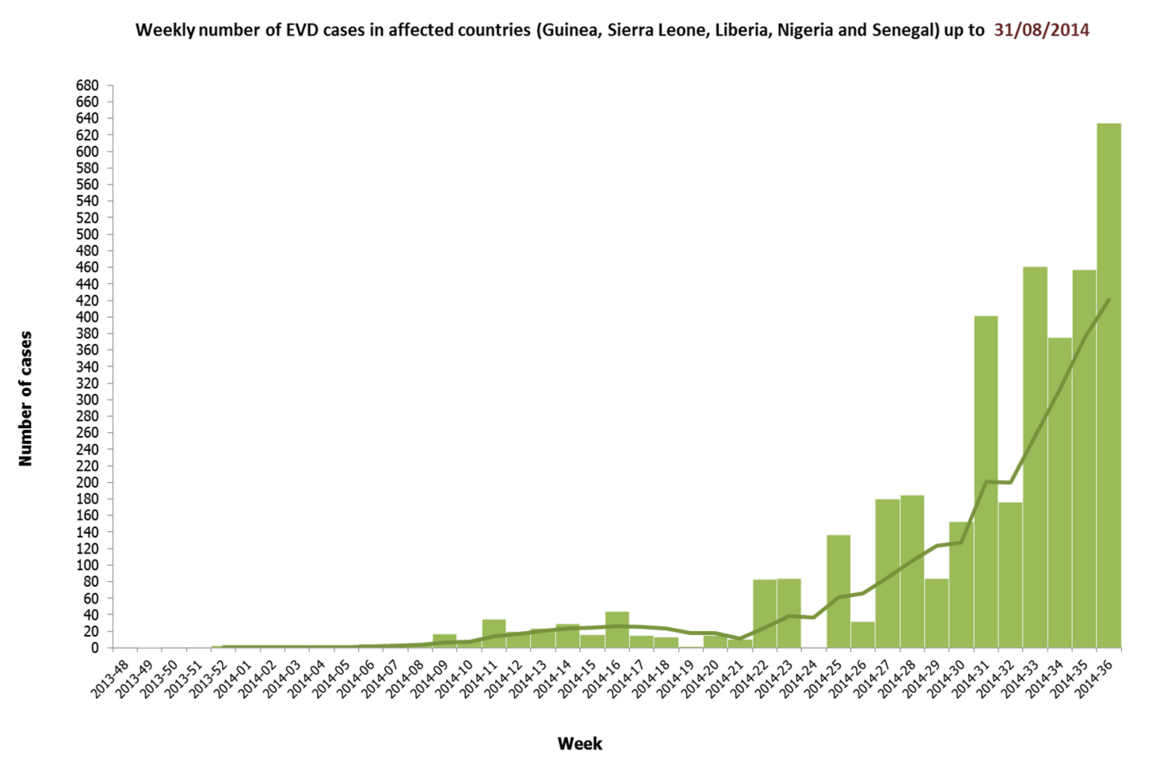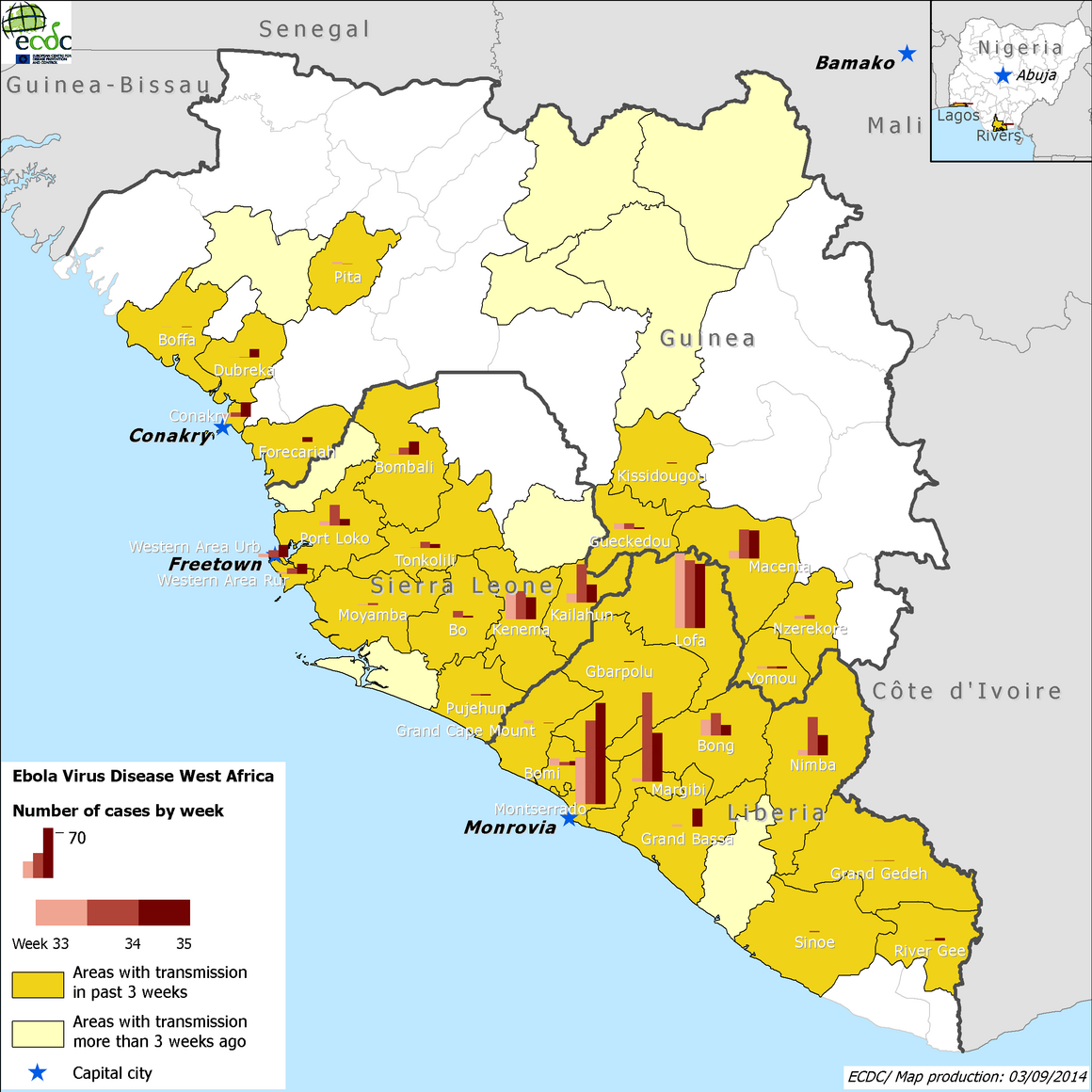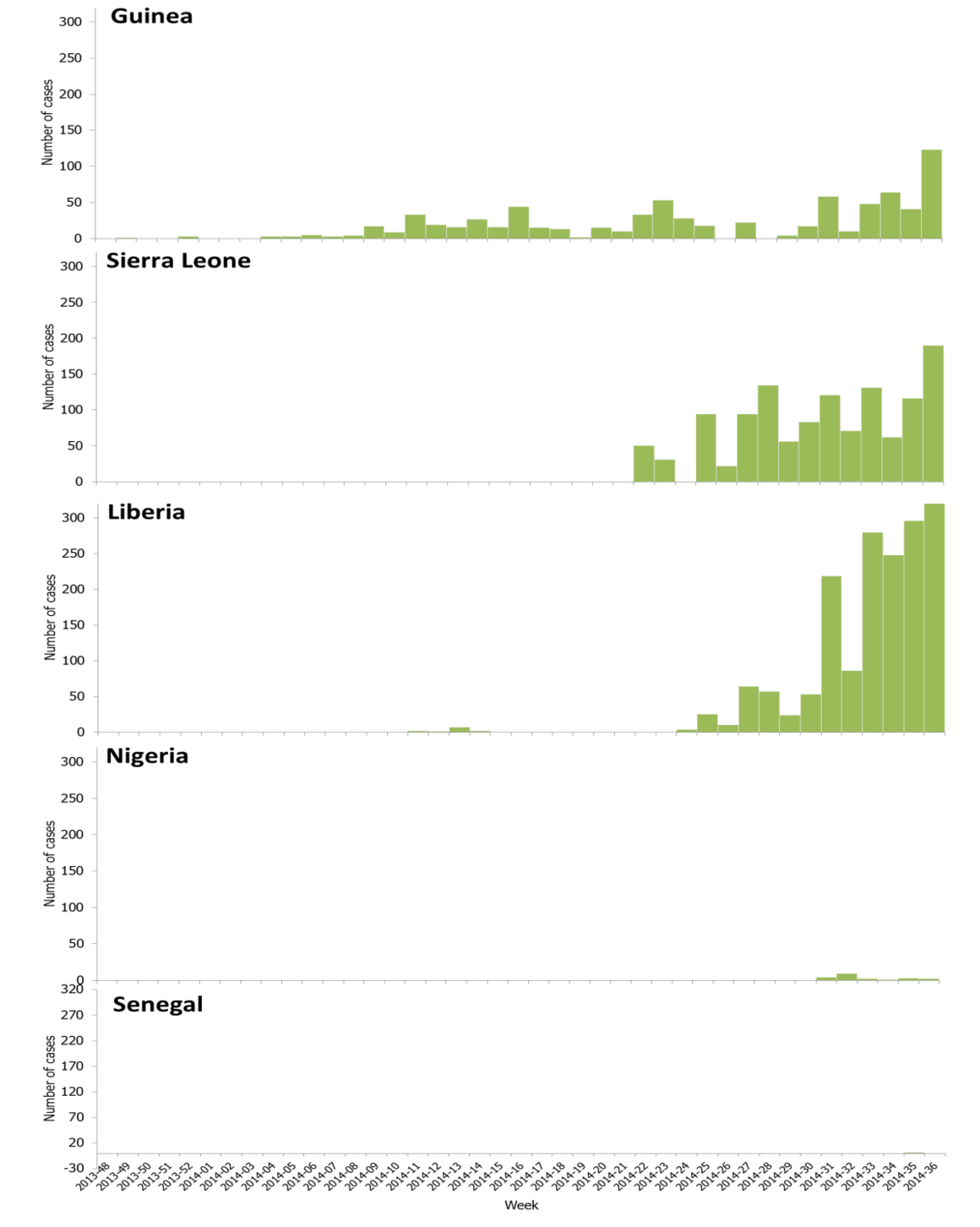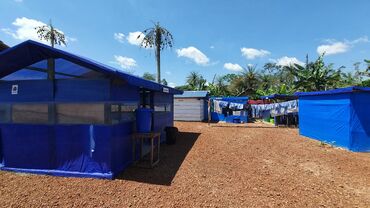Epidemiological update: Outbreak of Ebola virus disease in West Africa and Democratic Republic of the Congo
Since December 2013 and as of 31 August 2014, 3 707 cases of EVD, including 1 848 deaths have been reported by WHO. This is the first outbreak of Ebola virus disease (EVD) in West Africa and it is unprecedented in its size and geographical distribution.
On 8 August 2014, the World Health Organization declared the West Africa Ebola outbreak a Public Health Emergency of International Concern (PHEIC).
Since December 2013 and as of 31 August 2014, 3 707 cases of EVD, including 1 848 deaths have been reported by WHO. This is the first outbreak of Ebola virus disease (EVD) in West Africa and it is unprecedented in its size and geographical distribution, and in affecting densely populated urban areas. The outbreak is currently in a rapid increase phase and has not yet peaked (Figure 1).
Officially reported figures are generally believed to be underestimations of the real magnitude of this outbreak.
Figure 1: Distribution of reported cases of Ebola virus disease by week, in Guinea, Sierra Leone, Liberia, Nigeria and Senegal, week 48/2013 to 36/2014 (as of 31 August 2014*)

Note: The green trend line represents a five-week moving average of cases.
*Data for week 36 2014 are incomplete up to 31 Aug 2014
Source: adapted from WHO (Ebola virus disease, West Africa – update)
In Guinea, Liberia, Sierra Leone and Nigeria, cases have affected rural areas as well as large cities (i.e. Conakry, Freetown, Monrovia, Lagos and Port-Harcourt. See Figure 2).
Figure 2: Distribution of new EVD cases (confirmed, probable and suspected) by district, weeks 33-35, 2014

Source: Adapted from national situation reports. Week 36 is not added because of incomplete data.
Table: Cases, deaths and case-fatality ratios in the EVD-affected countries in West Africa, as of 31 August 2014

Source: Adapted from WHO (Ebola virus disease, West Africa – update)
The outbreak is spreading fast and accelerating. The most-affected rural areas during the past three weeks are Gueckedou (Guinea), Lofa (Liberia) and Kenema and Kailahun (Sierra Leone).
Ongoing transmission in the capital cities is of particular concern, owing to their population density and the repercussions for travel and trade. The increasing number of healthcare workers who have been infected by the Ebola virus is also worrying. Two-hundred and fifty-seven of the cases occurred in healthcare workers, including 140 of the deaths.
In Nigeria, a cluster initiated by air travel of an infectious person in July 2014 has resulted in tertiary cases in Lagos and recently a new cluster in Port Harcourt, Rivers State, with three confirmed cases as of 31 August 2014.
On 29 August, the Ministry of Health in Senegal reported a confirmed case of EVD in a 21-year-old male, a native of Guinea. He arrived in Dakar, by road, on 20 August and was hospitalised on 26 August after having initially been treated for malaria. On 27 August 2014, the Ministry of Health was informed that the patient was a contact of a known Ebola patient in Guinea and the patient was immediately isolated. However, no local transmission of EVD is currently reported in Senegal.
Figure 3: Distribution of cases of EVD by week of reporting in Guinea, Sierra Leone, Liberia, Nigeria and Senegal (as of 31 August 2014*)

Source: Adapted from WHO (Ebola virus disease, West Africa – update)
* Data for week 36 2014 are incomplete
Concurrent outbreak of Ebola virus disease in DRC
On 24 August 2014, an outbreak of Ebola virus disease (EVD) was declared in the Boende health zone of Equateur province in the Democratic Republic of the Congo. This outbreak is the seventh outbreak of EVD occurring in the country. Between 28 July and 4 September 2014, 72 cases of EVD, including 48 deaths, have been identified. Among these, seven are healthcare workers, six of whom have died. The first reported case was a woman from Ikanamongo village who butchered a bush animal given to her by her hunter husband. She fell ill with symptoms of EVD and died on 11 August 2014 at a private clinic in Isaka Village. The index case and the contacts identified have no history of travel to the EVD-affected countries in West Africa.
This outbreak is caused by Zaïre ebolavirus closely related to other viruses previously circulating in the country and distinct from the Zaïre ebolavirus strain circulating in West Africa. The outbreak in DRC is unrelated to the ongoing outbreak in West Africa, and is the result of an independent zoonotic introduction in the affected area.
Read more
Latest ECDC Rapid Risk Assessment Outbreak of Ebola virus disease in West Africa







